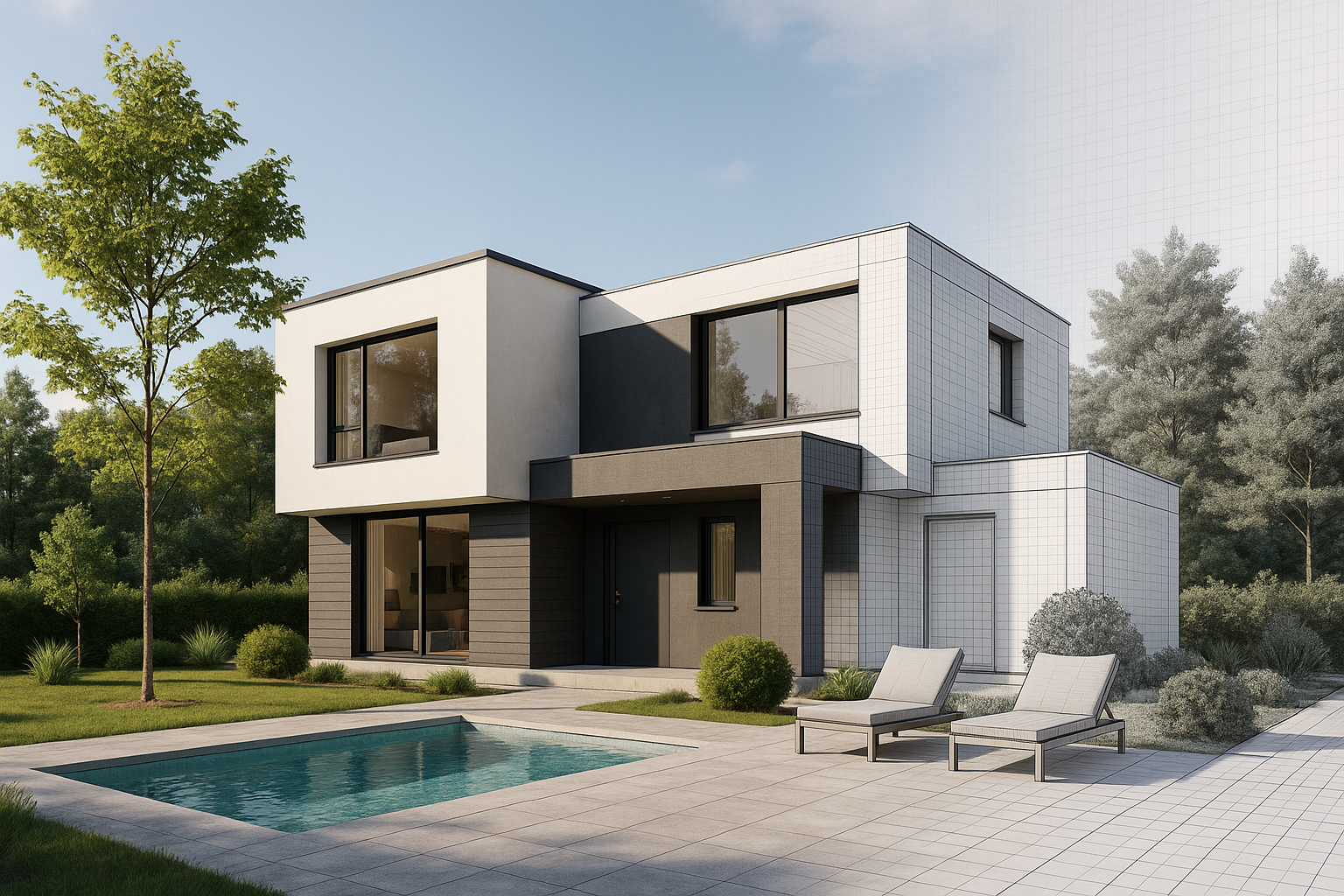Rendering has come a long way. What used to be grainy, blocky visuals that looked like early PlayStation games have evolved into jaw-droppingly realistic representations of homes, towers, and entire cities.
But here’s the thing: we’re just getting started.
As technology moves at warp speed, rendering is doing more than just looking good—it’s reshaping how architects design, present, and sell their visions. So what does the future look like?
Spoiler alert: it’s immersive, intelligent, and a whole lot faster.
1. Real-Time Rendering Will Be the New Standard
Forget waiting hours for a high-res render to bake like it’s a digital soufflé. The future is real-time rendering—instant, high-quality previews powered by game engines like Unreal Engine, Unity, and Chaos Vantage.
Architects and designers will:
- Walk clients through a space while adjusting lighting, textures, and furniture on the fly
- See instant feedback as they tweak angles, colors, or materials
- Ditch the endless render/revise/render loop
And with tools like Enscape and Twinmotion getting better by the minute, real-time rendering will become the baseline—not a bonus.
2. Rendering Will Get Smarter (Thanks, AI)
AI isn’t coming for your job (yet), but it is coming for your rendering process—in the best way possible.
Here’s what AI is already doing—and where it’s heading:
- Scene composition suggestions (AI-generated camera angles or lighting setups)
- Auto-population of environments with realistic trees, vehicles, and people
- Intelligent upscaling that turns basic sketches into polished renders
- Predictive design based on user behavior and space usage data
Basically, rendering will be less about tweaking sliders and more about telling the software what you want and letting it do the heavy lifting. Faster renders. Smarter decisions.
3. Virtual Reality Will Go Mainstream in Architecture
You’ve seen renders on screen. Now imagine walking through them.
Virtual Reality (VR) isn’t sci-fi anymore—it’s rapidly becoming an industry standard for architecture firms that want to wow clients and boost design precision.
What’s next:
- Full VR walk-throughs of unbuilt spaces
- Clients exploring their future home or office in real time
- Making decisions on the spot—“Let’s move that window over here.”
- Better spatial understanding and fewer post-build regrets
At JetBlack Studio, we’re already experimenting with VR-ready renders for forward-thinking clients. (It’s as cool as it sounds.)
4. Hyper-Realism Will Blur the Line Between Render and Reality
Rendering is already dangerously close to reality… but future tools will push it even further.
Expect:
- Photorealistic lighting simulations based on real-world sun paths and weather
- Material libraries that mimic texture, reflectivity, and even aging/wear over time
- Advanced ray tracing that captures shadows, depth, and glow with cinematic quality
In short, your renders will not just show what a space looks like—they’ll feel real.
5. Sustainability Simulations Will Be Built In
In the near future, rendering tools won’t just help you visualize a building—they’ll help you measure its environmental performance too.
That means:
- Heat mapping
- Sun exposure simulations
- Energy modeling and daylight studies
- Rainwater flow and landscaping impact
- These simulations will be baked into the rendering process, helping architects create smarter, greener buildings from day one.
It’s form and function—rendered beautifully.
6. Cloud-Based Rendering Will Rule
Rendering on your local machine? That’s so 2023.
As files grow heavier and detail demands increase, rendering will move fully to the cloud, giving designers access to:
- More power without frying your laptop
- Faster rendering queues
- Seamless collaboration with remote teams or clients
- Real-time syncing between devices, platforms, and locations
Tools like Chaos Cloud, Autodesk Cloud Rendering, and Fuzor are already paving the way.
7. Emotion-Driven Design Will Guide Presentation
It’s not just about accuracy anymore—it’s about emotion.
The future of architectural rendering focuses on experiential design:
- Mood-setting music or ambient sound
- Cinematic lighting
- Interactive elements that let clients explore scenes their way
- Storytelling through color palettes, movement, and guided animations
Renders won’t just show the space—they’ll tell the story behind it. And that’s what people remember.
What Does This Mean for Architects and Designers?
The future of Rendering is not just faster and prettier—it’s more strategic.
Here’s what firms embracing the future will gain:
- Faster approvals from clients and stakeholders
- Fewer mistakes thanks to better visual communication
- Stronger presentations that land more projects
- A competitive edge in a visual-first, experience-driven world
In short: You’ll stand out. And sell smarter.
Why JetBlack Studio?
At JetBlack Studio, we stay ahead of the curve so you don’t have to. Our rendering services aren’t just beautiful—they’re built for how architecture will be presented tomorrow.
From real-time walkthroughs to VR integration and photo-accurate environments, we help architects, developers, and creatives bring their designs to life—with tools built for the future.
Ready to render like it’s 2030?
Let’s create something extraordinary.
Author: Alan Amaya
JetBlack Studio
Where creativity meets technology.
